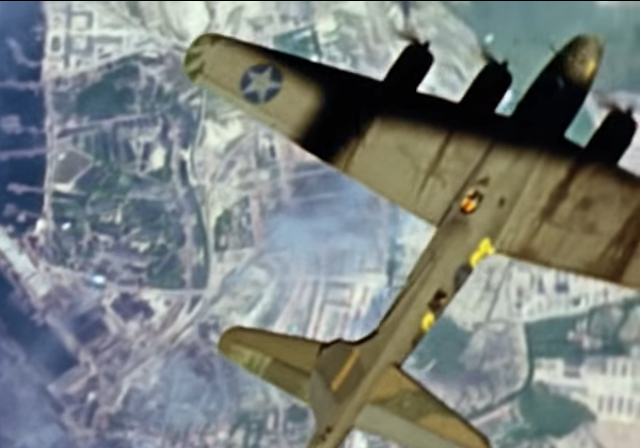The Cold Blue: A Tense and Heartbreaking Tribute to America’s Army Airmen

The 8th Army Airforce
Of all the branches of the military, the Army Airforce had an especially dangerous job. Leaving aside even the common flight risks of mid-air collisions and frostbite from flying in non-pressurized aircraft five miles in the air, the 8th Army Airforce dealt with unique horrors.
Over Germany, B-17 bombers couldn’t be accompanied by escort fighters due to a lack of fuel range, leaving them particularly vulnerable to Luftwaffe raids during their bombing runs near the targets. Even when they weren’t being raided they were subject to constant anti-aircraft bombardment from 88mm howitzers that shredded the planes.
As a result, the Army Airforce suffered the highest casualty rates of any branch of the army with 75% of airmen dying before their 25th mission. Of the more than 12,000 B-17 bombers built in World War II, more than 5,000 of them were lost. This casualty rate was higher than the substantial losses the Marines suffered in the Pacific theater.
The Cold Blue
It’s a tangible loss that is captured beautifully in The Cold Blue. This new documentary was released by HBO, seemingly to coincide with the release of George Clooney’s adaptation of Catch 22 on Hulu releasing this month. Functionally it’s very similar to last year’s They Shall Not Grow Old. In both that film and The Cold Blue, we’re treated to lost footage of the World Wars never before seen as it’s been transferred to high definition, restored, colorized and treated to Hollywood quality sound design and music composition.
If Cold Blue has any specific advantages over its predecessor it comes from its pedigree. For one, They Shall Not Grow Old never had the ability to depict any of the actual brutal warfighting of World War I because the photographers never rolled camera during combat. The Cold Blue doesn’t have this disadvantage. It’s a movie about men working in cramped, cold hulks of metal being shipped over Nazi Occupied Europe. We see these conditions and we see the bombs hitting the ground. We see the hallowed out European cities below. It feels gritty and uncomfortable.
A Unique Experience in Documentary Filmmaking
Additionally, The Cold Blue has a unique advantage in the history of war documentaries. It was filmed by William Wyler. Wyler was one of Old Hollywood’s greatest studio directors, responsible for Oscar-winning films like Best Years of Our Lives and Roman Holiday. With his masterful hand behind the cameras, we receive some of the most amazing shot color films of war I’ve ever seen. Unfortunately, this footage came at great cost as one of Wyler’s cinematographers was a victim during one of their missions.
If The Cold Blue fails at all it’s in it’s extremely indulgent and self-congratulating epilogue sequence which basically just celebrates how great the film is by letting all the veterans they recorded talk about how much they enjoyed the preceding film. The movie is great and all but maybe it’s below you to make a point of making a 95-year-old veteran relive his war trauma and break down in tears. Also, it’s cool you got a famous British folk guitarist to record your soundtrack but 10 minutes of the epilogue dedicated to him is a bit much compared to the five-minute segment you dedicated to one of the veterans dying in a plane crash after the film’s production.
My Personal Connection to the Film
All things considered, the body text of The Cold Blue is an astounding achievement. It captures the dread, claustrophobia and human loss that the 8th Airforce was forced to grapple with at the height of World War II. For me personally, it resonates in a very deep way because of my own family’s loss in the war.
Sitting in the corner of my late grandmother’s house is a small framed photograph of my great-uncle Lowell Collins. He sits forever dressed in his formal Army Airforce uniform, a young man lost to the ravages of the greatest war in human history. My great uncle Lowell died in the English Channel when his B-17 bomber was damaged during a bombing run over Europe.
I never knew my great uncle but I knew my grandmother and she never stopped missing her brother. His photo remains as a testament to the loss his family experienced in his absence, just as millions of other Americans did grappling with the loss of hundreds of thousands of young men who died to liberate Europe from totalitarianism.
The Cold Blue is a unique film for me in that I was able to sit in the chair my uncle once sat in. It’s painful and tense to imagine what he went through but it’s worth it to make yourself sit through this in honor of those who died for us.
The Cold Blue was released on May 23rd as a one-night-only Fathom Events screening but will be released on HBO on June 6th.
CLICK HERE FOR FULL VERSION OF THIS STORY

